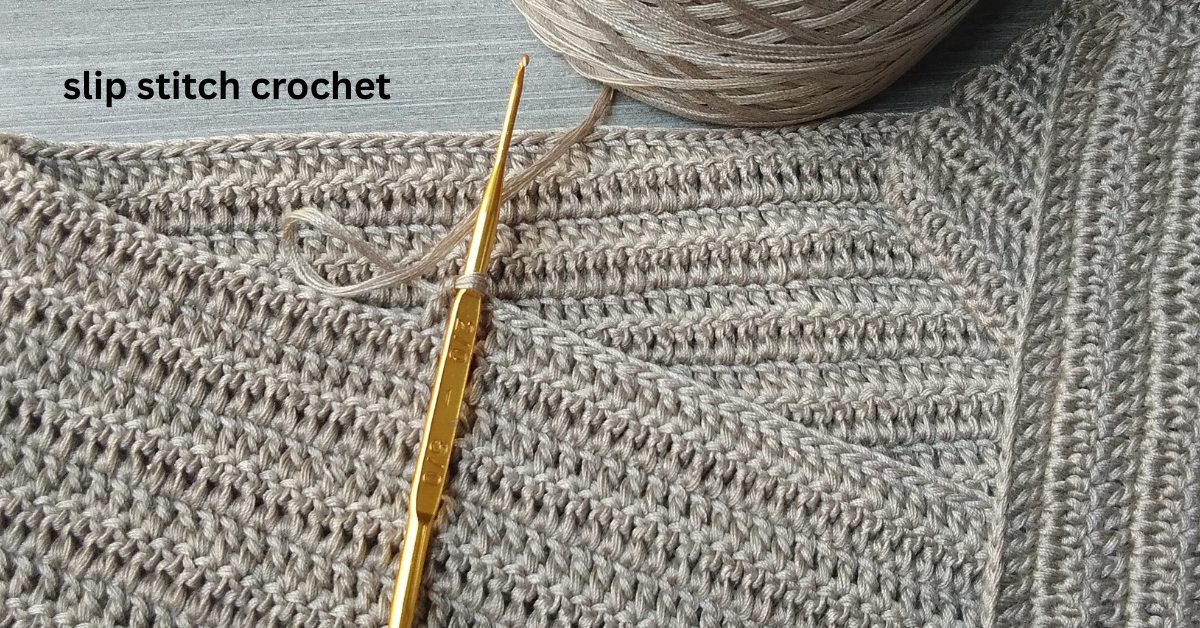When it comes to essential techniques in the world of crochet, the slip stitch crochet stands out as one of the simplest yet most versatile stitches. Often underestimated, this tiny stitch plays a major role in shaping, joining, and adding polish to countless crochet projects. Whether you’re a beginner just learning the basics or an experienced crafter refining your technique, understanding how and when to use the slip stitch can take your crochet to the next level.
What Is a Slip Stitch Crochet?
The slip stitch crochet—abbreviated as sl st in patterns—is the shortest of all crochet stitches. It creates an almost flat, compact stitch that doesn’t add height to your work. Because of its subtlety and precision, it is often used to:
- Join rounds
- Move your yarn without adding bulk
- Create decorative seams
- Add surface details or texture
- Finish edges with a clean, minimal look
Despite its simplicity, the slip stitch is a powerful tool when used strategically.
How to Make a Slip Stitch Crochet
The slip stitch is very easy to learn. Here’s how to do it:
- Insert your hook into the next stitch (or space, if specified)
- Yarn over and pull through both the stitch and the loop on your hook in one motion
That’s it! You’ve made a slip stitch. It’s a smooth and fast stitch to work, making it perfect for both utility and detail work.
Common Uses of Slip Stitch Crochet
1. Joining Rounds
One of the most common uses for slip stitch crochet is joining rounds in circular patterns such as granny squares, hats, or mandalas. Instead of ending a round abruptly, you slip stitch into the first stitch of the round to create a seamless loop. This ensures your project looks clean and finished.
2. Seaming and Joining Pieces
Slip stitch crochet is ideal for joining separate pieces of fabric. Whether you’re assembling granny squares or stitching together parts of an amigurumi project, the slip stitch creates a nearly invisible seam while maintaining flexibility.
3. Creating Ribbing and Texture
When worked into the back loops only, the slip stitch produces a stretchy, ribbed texture similar to knit fabric. This is excellent for cuffs, hems, or hat bands, giving your project elasticity and a professional finish.
4. Surface Crochet and Decorative Lines
Slip stitch crochet can be used for surface crochet—a technique where you work slip stitches across the surface of finished fabric to create outlines, patterns, or lettering. This adds texture and visual interest without adding bulk.
5. Moving Across Your Work
Sometimes, your pattern might ask you to move your yarn across stitches without affecting height or texture. Slip stitching is perfect for this task—it shifts your working yarn without changing the elevation of your rows.
Slip Stitch Variations
- Slip Stitch in Back Loop Only (BLO): Creates a knit-like ribbing effect
- Slip Stitch in Front Loop Only (FLO): Adds texture with a slightly raised line
- Reverse Slip Stitch (Crab Stitch): Worked in the opposite direction to create a decorative edge
Experimenting with these variations can unlock new design possibilities in your crochet projects.
Patterns That Use Slip Stitch Crochet
Many popular patterns rely heavily on the slip stitch. These include:
- Hats and beanies with ribbed brims
- Seamless amigurumi toys
- Mosaic and tapestry crochet designs
- Crochet bags and clutches
- Scarves with decorative edging
Understanding how the slip stitch crochet functions in different contexts will allow you to read patterns more confidently and adapt them to your needs.
Tips for Working Slip Stitches
- Use a loose tension when slip stitching to avoid tight, difficult-to-insert stitches
- Count stitches carefully, especially when using slip stitch rows for ribbing
- Switch to a larger hook if your slip stitches are too tight
- Practice different techniques (BLO, FLO, surface slip stitch) to build skill and confidence
Conclusion
Though often overlooked, slip stitch crochet is one of the most valuable and flexible stitches in any crocheter’s toolkit. From creating clean joins to adding delicate textures and borders, its applications are vast and versatile. Learning how to use the slip stitch effectively opens the door to a more polished and professional finish for any project.
Whether you’re crafting a detailed mosaic pattern or simply trying to cleanly end a round, the slip stitch ensures your crochet looks smooth and refined. Don’t underestimate its power—mastering this little stitch can make a big difference in your crochet journey.

